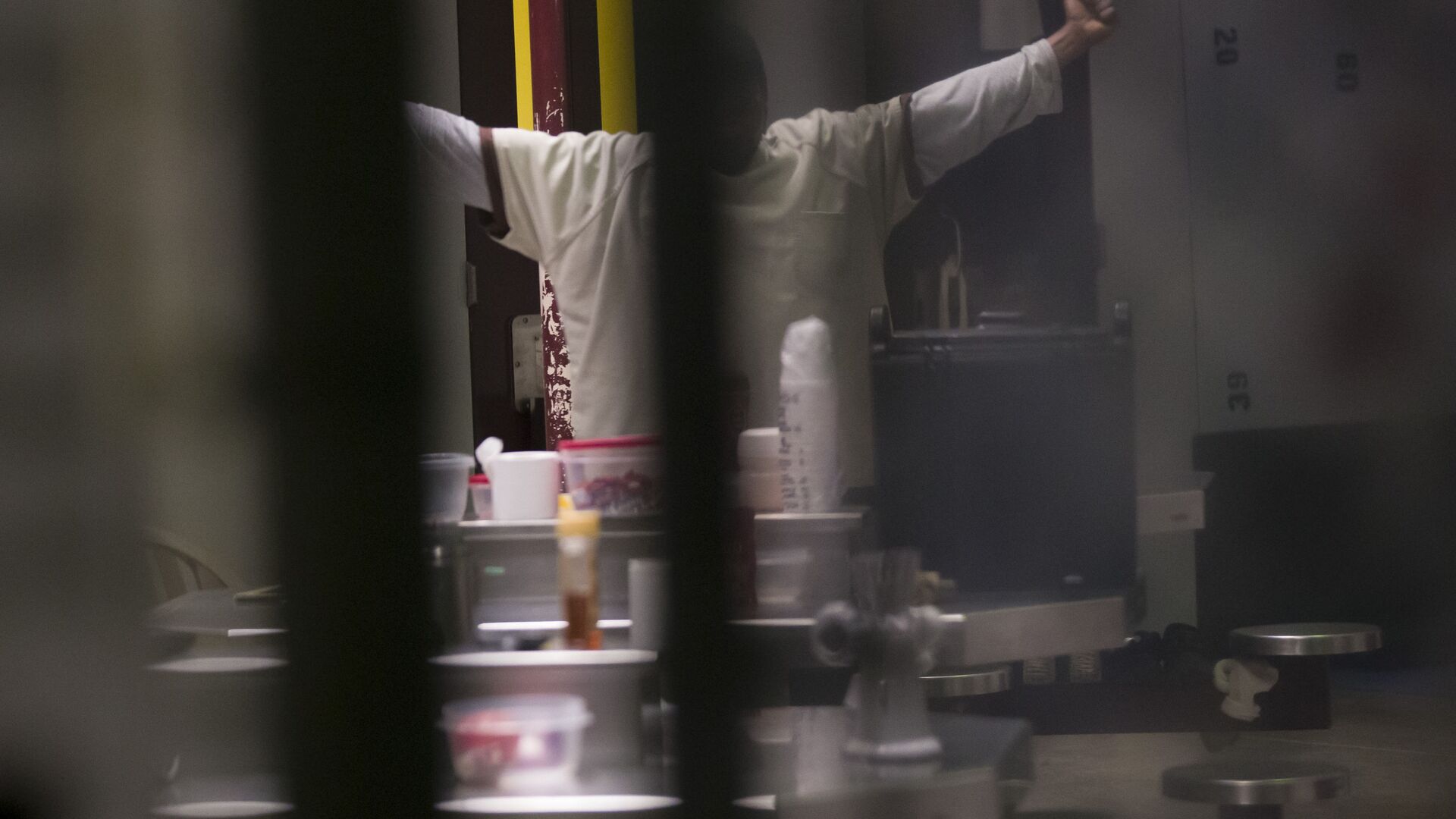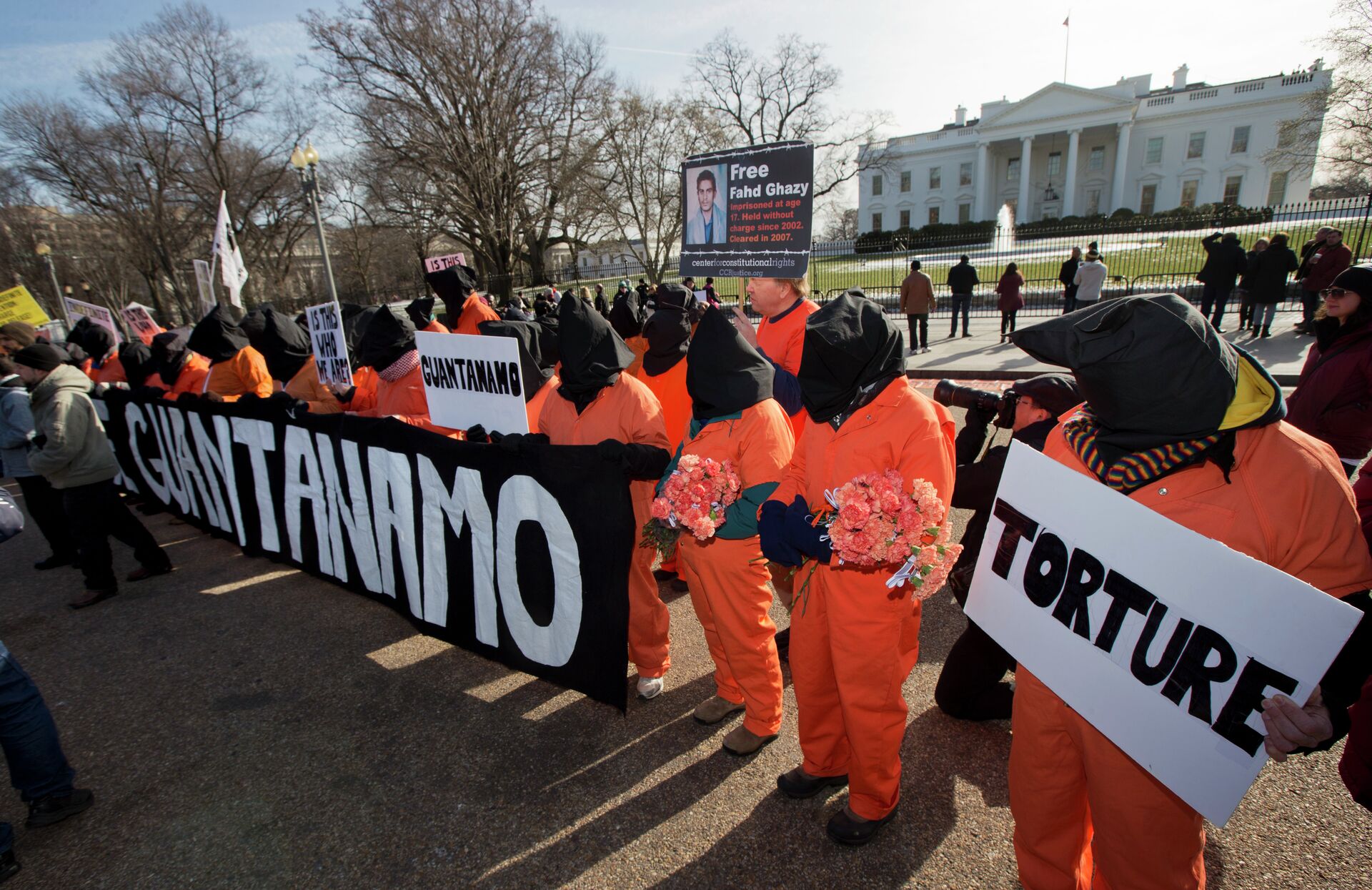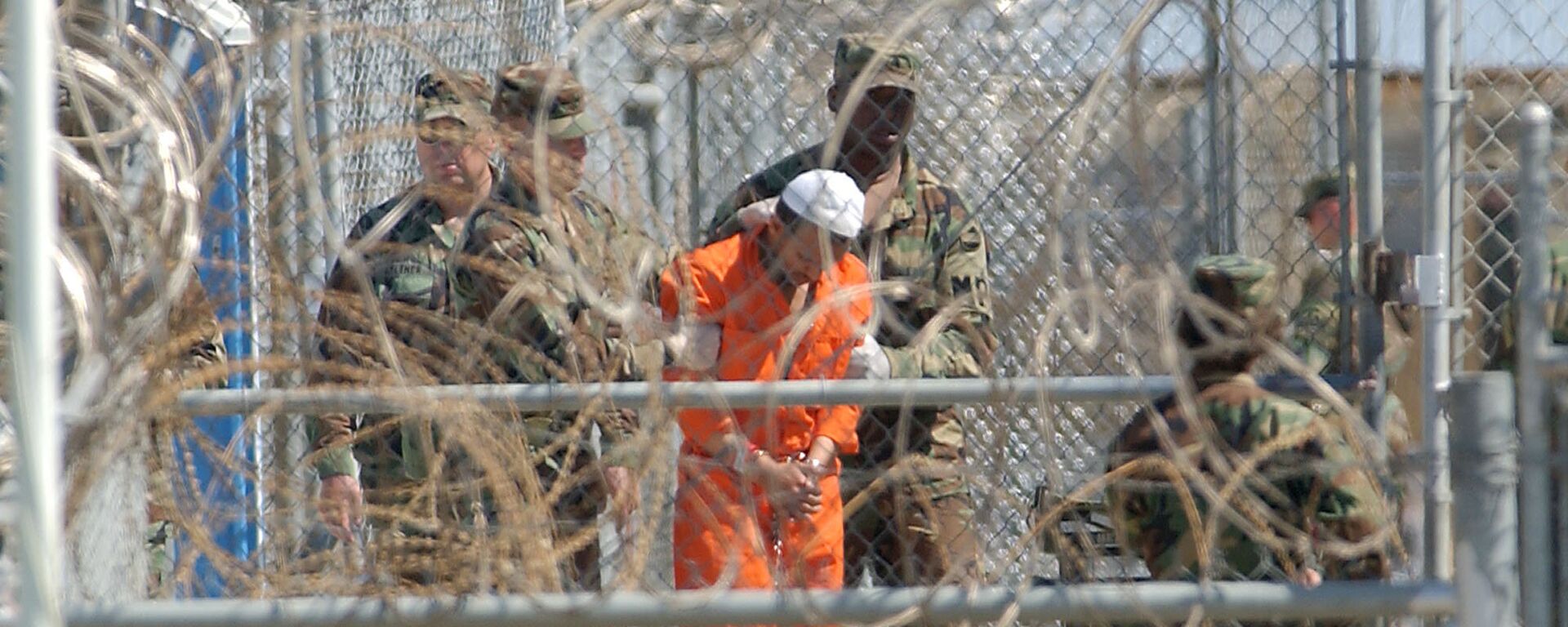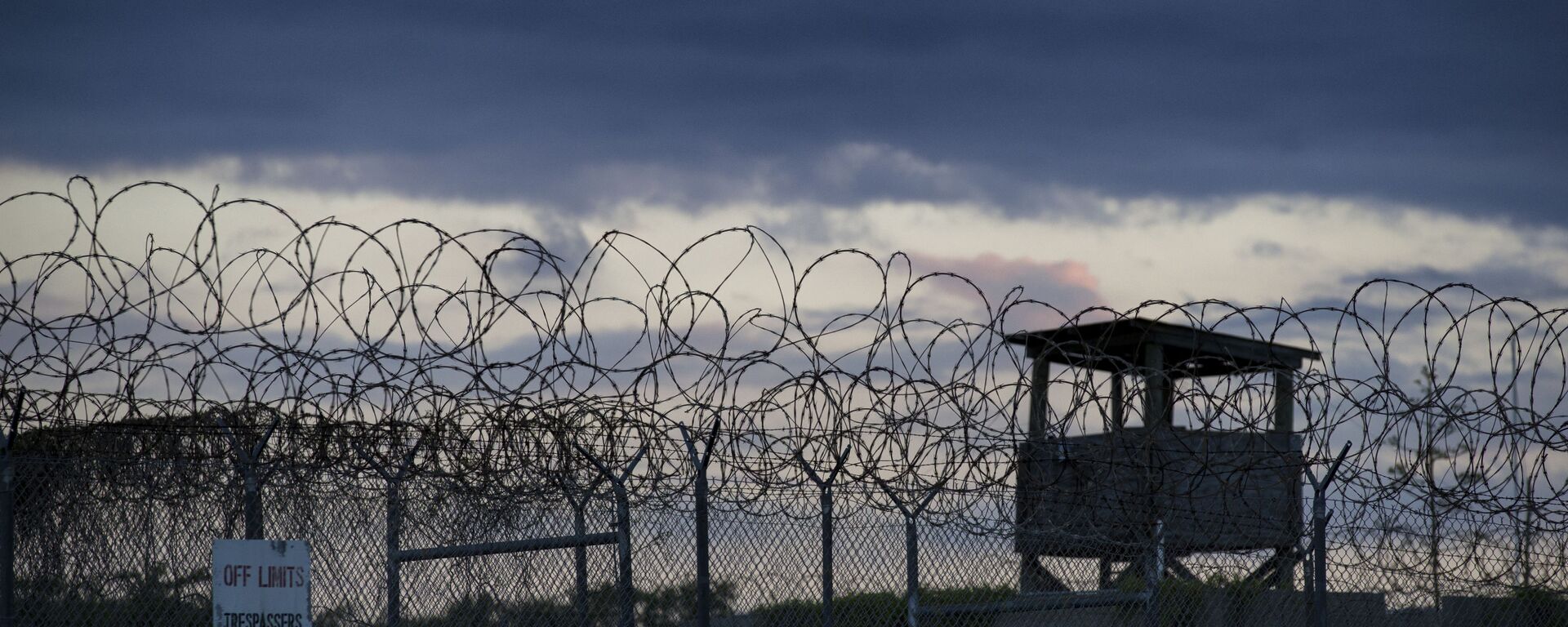Ex-Detainee Says Guantanamo Was Merely 'Human Lab' Experimenting on Inmates

© AP Photo / Alex Brandon
Subscribe
WASHINGTON (Sputnik), Ekaterina Chukaeva - The Guantanamo prison is the worst place on earth and, with all the torture occurring there, it is in effect a human laboratory which experiments on inmates, former detainee Mansoor Adayfi told Sputnik, adding that everything at the notorious US camp is designed to break its inhabitants.
Established by the Bush administration in 2002, the facility has long been criticized for mistreatment and abuse of prisoners, with human rights activists and international organizations calling for its closure. Former US President Barack Obama vowed to shut the camp down but faced strong opposition from Congress. His successor, Donald Trump, signed an order to keep the detention camp open indefinitely, while incumbent Joe Biden has promised to close it.
The American authorities have since shut down secretive Camp Seven, where highly classified prisoners were kept, and transferred them to other accommodation blocks. Yet no announcement on the full closure of the camp has followed. In July, the White House announced that the Biden administration is aiming to close the detention facility for good and working to transfer its remaining prisoners out, but no date has been set.
'I Had Dreams'
Originally from a tribal area in Yemen, Adayfi finished high school and was working in a security company before he was kidnapped by warlords in Egypt and handed over to the CIA in 2002.
"I had a dream in Yemen to finish my job at the Institute - we were doing research – I was promised a regular reference letter and [an opportunity to study] in one of the Gulf countries. I was so happy planning my life. [I was thinking] about getting married. I was going to be that important person in society, you know, I had dreams. I loved a woman there and wanted to marry. Thanks to the Americans who destroyed that," he said, sharing the memories of life before his capture.
He remembered that the CIA repeatedly called him an "Al-Qaeda [terrorist group, banned in Russia] commander" and "Al-Qaeda general."
"I was taken to a black site. For two months I experienced beatings, sleep deprivation, peeing, shitting, [I was] blindfolded, …. After two months I was shipped to Guantanamo, the new world, the world of terrorists and terrors, the worst of the worst," he said. Adayfi turned 19 at the black site.
Detainee 441
Adayfi recalled that on the way to Guantanamo he had over 40 hours of beatings, loud music, and was chained to the floor, hooded, gagged and blindfolded.
"They put duct tape over my mouth. It was horrible. I wished to die because you cannot hear, you cannot talk and understand. You only feel the pain and the hitting. Then we arrived at Guantanamo and it was worse," he said.
That is how Adayfi became "Detainee 441" for the next 14 years. He remembers that American soldiers repeatedly told him: "You are under the control of the US." At Guantanamo, the torture continued – Adayfi again experienced beatings, being stripped naked, and other violations.
"They put us in a small room for the shower, they cut our clothes. Guards [held] guns to your head and [they switched on] water like for thirty minutes. I was beaten up. After that they took my fingerprints, I was dragged to the cage," he recalled.
According to Adayfi, the US authorities liked to give legal names to the practices they used at the notorious camp. For example, they never used the word "torture," but rather "enhanced interrogation techniques."
"Guantanamo was selected to be outside the law. I'm talking about the system, you know, the system that was created to serve to protect humanity. [But] it only demonized us," he admitted.
In 2002, General Geoffrey Miller was appointed to head Guantanamo shortly after the Bush administration approved so-called enhanced interrogation techniques. Miller, with experience of running other notorious CIA-run facilities, including Abu Ghraib, Camp Cropper, and Camp Bucca, retired in 2006. After his retirement, a number of allegations of torture under his command in Guantanamo emerged. For example, a French court summoned him back in 2016 over allegations of torture from a prisoner.
Adayfi recalled that with Miller’s arrival, prison guards and interrogators started learning the so-called enhanced interrogation techniques. He noted that Miller's tenure at Guantanamo was the worst for prisoners.
"Guantanamo turned to be not the worst place but the worst of the worst places on earth. The torture, abusive interrogation methods. it was a laboratory. It was a human lab, experimenting on us," he recalled.
When Someone is Trying to Break You
According to Adayfi, it was hard to believe that one can find himself in a place where he was totally cut off from the world and from himself. But this was Guantanamo.
"In Guantanamo, everything was designed to break us - interrogation, torture, noise, sleep deprivation, loud noises, loud music in the interrogation room, beating, little food, stripping naked; it was hard," Adayfi recalled.
Time passed, and as prisoners tried asserting themselves against their prison guards, Adayfi emerged as a leader in the prison resistance. He organized hunger strikes to protest the poor treatment of prisoners, or "brothers," as he called them. The prisoners spent years on hunger strike and subsequent force-feeding.

Protesters dressed as detainees gather in front of the White House on Sunday, during a rally to mark the 13th anniversary of the first detainees in the U.S.'s war on terror being brought to the detention center at Guantanamo Bay Naval Base in Cuba.
© AP Photo / Manuel Balce Ceneta
"If they take your memories, if they take your knowledge, emotions, experience? That is Guantanamo. It's a place that changes you. We tried to survive at Guantanamo and first, we went on a peaceful protest - hunger strike … Someone tries to change you, to break you, to drag you to insanity. It is survival instinct," he recalled.
Even during interviews he wears an orange scarf – a symbol of the resistance inside.
"Guantanamo stands for torture, abuse, lawlessness, indefinite detention, abuse of power, death sentence. Guantanamo shouldn't exist in any place anywhere and anytime because that would destroy humanity. I'm trying to send a message that that place should not exist, and it's my duty as a victim of that place to bring awareness to the people," Adayfi stressed.
Waking Up to Screams to Learn About the Death of Fellow Inmates
Adayfi spent 14 years in Guantanamo, and was released in 2016 without any charges. He entered it as a young man and left a fully-grown man. He spent half of his life behind bars and feels that he is a different man now. He adapted to that reality, and recalled that the prisoners tried to support each other, protecting the younger and supporting the older.
"We created life at Guantanamo. We created artwork, we learned. It helped us to survive. We created art, we sang, we dance. We tried to be normal. Try to stick to the life we had, but we end up in jail," he recalled.
The hardest moments in the prison were those when he learned about the death of fellow prisoners.
"It was one of the most difficult things. Waking up in the middle of the night hearing those guards scream. And I found suddenly when they took my dead brothers. I just cannot forget those moments, because they were never thinking about killing themselves or talking about it," he said.
The guards would tell them that the prisoners committed suicide, but Adayfi couldn't believe that.
"When you see death for the first time in your life, someone who lives with you for years and [with whom you] struggled together, you go on a hunger strike, you become friends and one night you just wake up ... And there is someone there dead. I will never forget that," he admitted.
It’s been five years since Adayfi was freed. Since then, he has published a book about his life in the prison, entitled "Don't Forget Us Here: Lost and Found at Guantanamo." He is now working on a new book about his life after the prison. He is living in Serbia, but has problems finding work or traveling to another country.
Adayfi is currently collaborating with the CAGE group, which was formed to raise awareness of the lives of those held at Guantanamo.
"This year we sent a letter to Biden. We are trying to help them in the process of closing Guantanamo and we suggested, if they can use our help, we can help," Adayfi, who is now a Guantanamo Project Coordinator with CAGE, said, referring to a letter sent to the American president in January.
Adayfi has recently finished his thesis on rehabilitation and reintegration of former Guantanamo inmates into normal life, and sent a copy to the US government. He also maintains contact with other former inmates.
There are 1.8 million of Muslims around the world, but only a handful of them have had connections to Al-Qaeda, and it's injustice to judge all Muslims by actions of individuals, Adayfi added.
"They used the war on terror for military expansion …, to invade Afghanistan, to invade Iraq. They sent their soldiers, military campaign, drone assassination. Imagine those victims, entire families wiped out [in drone attacks]," he concluded.


